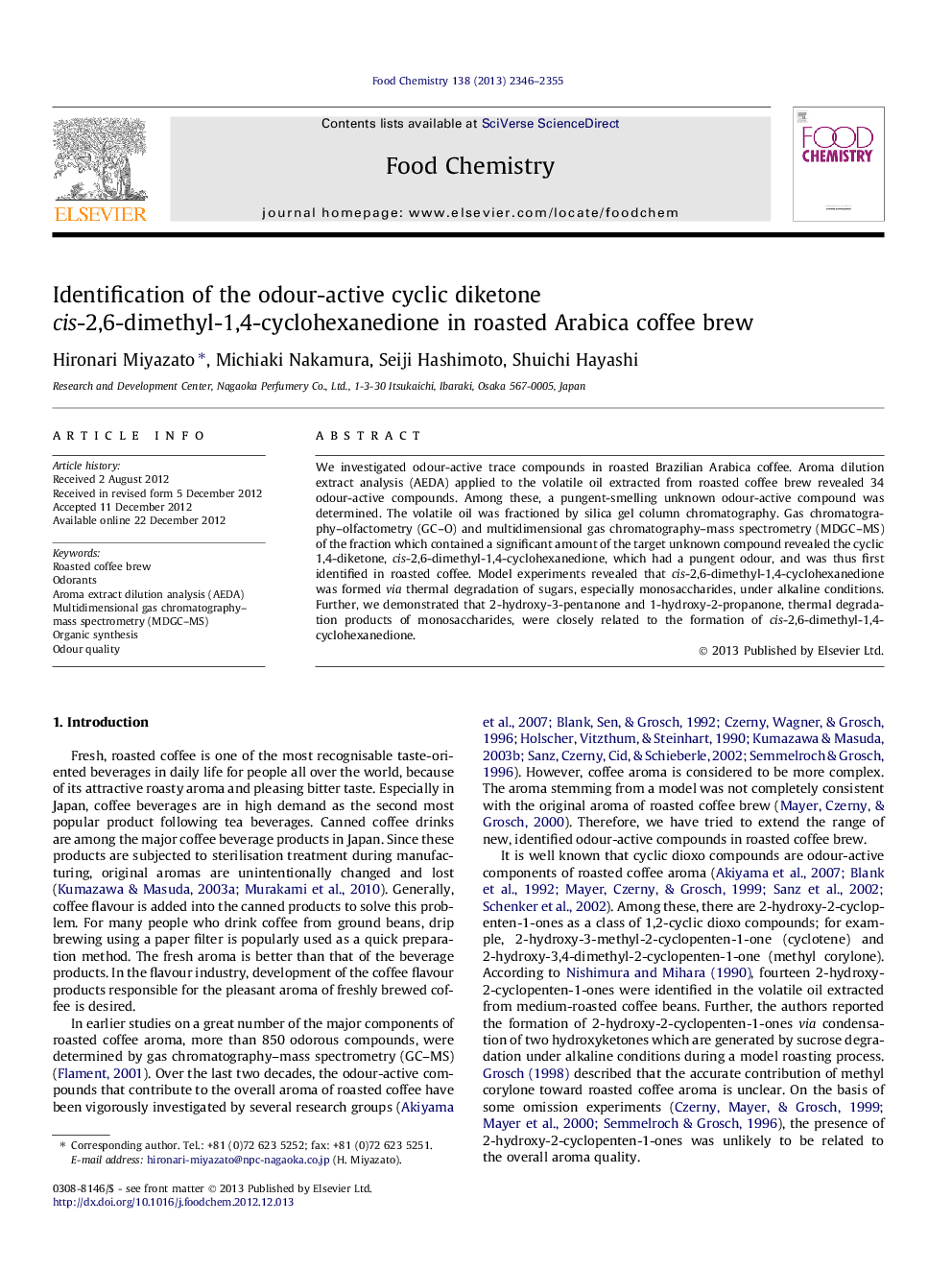| Article ID | Journal | Published Year | Pages | File Type |
|---|---|---|---|---|
| 1185519 | Food Chemistry | 2013 | 10 Pages |
We investigated odour-active trace compounds in roasted Brazilian Arabica coffee. Aroma dilution extract analysis (AEDA) applied to the volatile oil extracted from roasted coffee brew revealed 34 odour-active compounds. Among these, a pungent-smelling unknown odour-active compound was determined. The volatile oil was fractioned by silica gel column chromatography. Gas chromatography–olfactometry (GC–O) and multidimensional gas chromatography–mass spectrometry (MDGC–MS) of the fraction which contained a significant amount of the target unknown compound revealed the cyclic 1,4-diketone, cis-2,6-dimethyl-1,4-cyclohexanedione, which had a pungent odour, and was thus first identified in roasted coffee. Model experiments revealed that cis-2,6-dimethyl-1,4-cyclohexanedione was formed via thermal degradation of sugars, especially monosaccharides, under alkaline conditions. Further, we demonstrated that 2-hydroxy-3-pentanone and 1-hydroxy-2-propanone, thermal degradation products of monosaccharides, were closely related to the formation of cis-2,6-dimethyl-1,4-cyclohexanedione.
► AEDA revealed 34 odour-active compounds in roasted Brazilian Arabica coffee brew. ► Pungent-smelling compound cis-2,6-dimethyl-1,4-cyclohexanedione was identified. ► A safer synthetic route for cis-2,6-dimethyl-1,4-cyclohexanedione was developed. ► cis-2,6-Dimethyl-1,4-cyclohexanedione was formed by monosaccharide thermal degradations. ► 2-Hydroxy-3-pentanone and 1-hydroxy-2-propanone were significant precursors.
